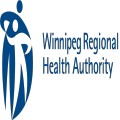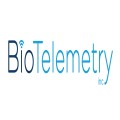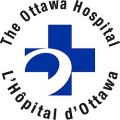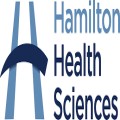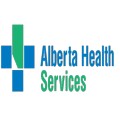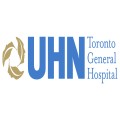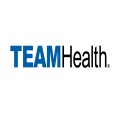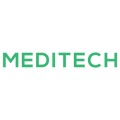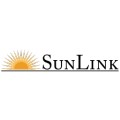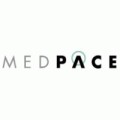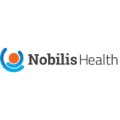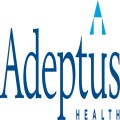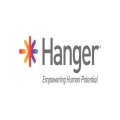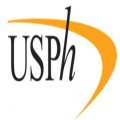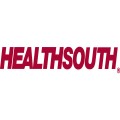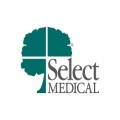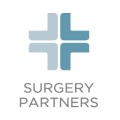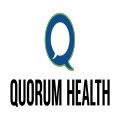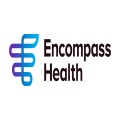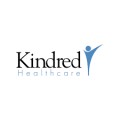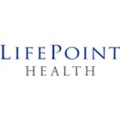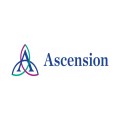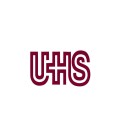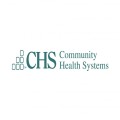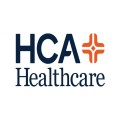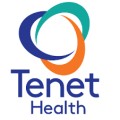
Index
Applications & Benefits of GAO’s RFID, BLE, IoT & Drones for Hospitals Industry
GAO Helps Customers Comply with Standards, Mandates & Regulations of Hospitals Industry
GAO’s Software Provides Easy Integration with API
Case Studies of RFID Applications
GAO RFID Systems & Hardware for Hospitals Industry
Overview
Hospitals offer a wide range of medical services, including emergency care, surgeries, medical imaging, laboratory tests, specialized treatments, and more. They cater to patients of all ages with diverse medical needs. Hospitals employ a variety of healthcare professionals such as doctors, nurses, surgeons, specialists, technicians, therapists, and administrative staff to provide comprehensive care and support to patients. Hospitals are equipped with medical facilities like operating rooms, patient wards, intensive care units, diagnostic equipment, and advanced technology to deliver effective medical care. Many hospitals engage in medical research to advance medical knowledge and improve treatments. Teaching hospitals also play a role in training medical students, residents, and interns. Hospitals often collaborate with primary care providers, specialists, clinics, and other medical facilities to ensure seamless patient referrals, transfers, and follow-up care. Hospitals can be publicly funded and operated by government entities, or they can be privately owned and operated by corporations, nonprofit organizations, or individuals. The hospital industry is subject to strict regulations and standards to ensure patient safety, quality of care, and ethical practices. Regulatory bodies oversee licensing, accreditation, and compliance with medical guidelines.
GAO’s RFID, BLE, IoT, and drone technologies have helped its customers in hospitals industry to improve their work processes, their operations and productivity by better management of their staff, materials and operational equipment such as X-ray Machine, MRI Scanner, CT Scanner, Ultrasound Machine, ECG Machine (Electrocardiogram), Defibrillator, Surgical Instruments, Operating Tables, Anesthesia Machines, Ventilators, Infusion Pumps, Patient Monitors, Laboratory Microscopes, Autoclaves, Hemodialysis Machines, Blood Gas Analyzers, Incubators, Pharmacy Dispensing Systems, Nebulizers, Endoscopy Equipment, C-arm Fluoroscopy Machine, Laser Therapy Equipment, Pulse Oximeters, Nursing Carts, Rehabilitation Equipment, Mobility Aids (Wheelchairs, Walkers), Sterilization Equipment, Dental Chairs and Equipment, Radiation Therapy Machines, Ophthalmic Instruments.
Ranked as one of the top 10 global RFID suppliers, GAO RFID Inc. is based in New York City, U.S. and Toronto, Canada. GAO offers a comprehensive selection of UHF, HF (including NFC) and LF RFID (radio frequency identification) readers and tags, BLE (Low Energy Bluetooth) gateways and beacons, and various RFID and BLE systems such as people tracking, asset tracking, access control, parking control, fleet management, WIP (work in progress), traceability. Such RFID and BLE products and systems, as well as its IoT and drone technologies, have been successfully deployed for hospitals industry. Its sister company, GAO Tek Inc. https://gaotek.com, is a leading supplier of industrial or commercial testers and analyzers, drones, and network products.
The targeted markets of both GAO RFID Inc. and GAO Tek Inc. are North America, particularly the U.S., Canada, Mexico, and Europe. As a result, this website gaorfid.com is offered in English and other major languages of North America and Europe such as Spanish, French, German, Italian, Polish, Ukrainian, Romanian, Russian, Dutch, Turkish, Greek, Hungarian, Swedish, Czech, Portuguese, Serbian, Bulgarian, Croatian, Danish, Finnish, Norwegian, Slovak, Catalan, Lithuanian, Bosnian, Galician, Slovene, Latvian, Estonian, Welsh, Icelandic, and Irish.
Applications & Benefits of GAO’s RFID, BLE, IoT & Drones for Hospitals Industry

To satisfy its customers, GAO’s RFID or RFID Systems for Historical Sites Industry are offered in 2 versions. One version is that its software is running on a local server that normally is on our client’s premise, and another version runs in the cloud. The cloud server could be GAO’s cloud server, client’s own cloud server or a cloud server from one of the leading cloud server providers such as Amazon Web Services (AWS), Microsoft Azure, Google Cloud, IBM Cloud (formerly SoftLayer), Oracle Cloud, RedHat, Heroku, Digital Ocean, CloudFlare, Linode and Rackspace. The above illustrates GAO system for sub-industry with its software running on a local server.

The above illustrates GAO system for Historical Sites Industry with its software running in cloud.
GAO’s RFID and BLE technologies, consisting of RFID readers, RFID tags, BLE gateways, BLE beacons, software, cloud services and their systems, have the following applications in Historical Sites industry:
- Visitor Access and Admission Control: RFID-enabled tickets or wristbands can streamline entry processes, reducing waiting times and enhancing security.
- Guided Tours: RFID tags in exhibits and points of interest can trigger audio guides or multimedia presentations on visitors’ devices, offering personalized and interactive tours.
- Interactive Exhibits: RFID-enabled interactive displays can provide detailed information when visitors interact with objects, encouraging engagement and learning.
- Augmented Reality (AR) Enhancements: Combining RFID with AR technology, visitors can access historical reconstructions, animations, and additional content related to artifacts.
- Artifact Tracking and Management: RFID tags can be attached to artifacts, enabling efficient inventory management, tracking, and preventing theft or loss.
- Conservation Monitoring: RFID-enabled sensors can help monitor temperature, humidity, and light levels to ensure optimal preservation conditions for delicate artifacts.
- Queue Management: RFID-based systems can manage visitor flows, reducing overcrowding and ensuring a smoother experience during peak times.
- Interactive Workshops and Activities: RFID tags can enable hands-on workshops and activities, providing visitors with interactive learning experiences.
- Personalized Experiences: RFID technology can facilitate personalized content delivery, tailoring information to visitors’ interests and preferences.
- Cultural Exchange and Language Translation: RFID-enabled devices can offer translations of exhibit information, enhancing accessibility for international visitors
- Digital Souvenirs: Visitors can use RFID-equipped devices to collect digital souvenirs, photos, or information during their visit.
- Event and Program Management: RFID can assist in managing events, workshops, and performances by tracking attendance and managing access to different areas.
- Feedback and Engagement: RFID systems can gather feedback from visitors, allowing historical sites to continually improve their offerings.
- Emergency Response: RFID-enabled systems can aid emergency response teams in identifying and locating visitors during evacuations.
- Educational Initiatives: RFID technology can support educational programs by tracking student participation and engagement in various activities.
- Membership and Loyalty Programs: RFID cards or devices can be used for membership identification and loyalty programs, offering special benefits to frequent visitors.
- Cafeteria and Gift Shop Transactions: RFID-based payment systems can streamline transactions in on-site amenities, improving convenience for visitors.
- Archaeological Excavation Management: RFID tags can be used to label and catalog artifacts during archaeological digs, improving the accuracy of data collection.
GAO’s drone technologies find the following applications in the Historical Sites industry:
- Smart Lighting: IoT-enabled lighting systems can adjust brightness and color temperature based on occupancy and time of day, enhancing the ambiance while conserving energy.
- Environmental Monitoring: IoT sensors can track temperature, humidity, air quality, and light levels to ensure optimal preservation conditions for artifacts and structures.
- Security and Surveillance: IoT cameras and sensors can provide real-time monitoring of historical sites, helping prevent vandalism, theft, or unauthorized access.
- Predictive Maintenance: IoT devices can monitor the structural integrity of buildings and monuments, predicting maintenance needs and preventing deterioration.
- Visitor Tracking and Analytics: IoT systems can analyze visitor movements to optimize exhibit layouts, understand traffic patterns, and improve the overall visitor experience.
- Energy Management: IoT-based systems can regulate heating, cooling, and other energy-consuming systems to minimize waste and reduce operating costs.
- Smart Signage: IoT-enabled signs can dynamically update information, direct visitors, and even provide translations based on user preferences.
- Audio Guides and Interpretive Content: IoT devices can provide location-based audio guides and multimedia content to enhance visitor engagement and education.
- Virtual Reality (VR) and Augmented Reality (AR) Enhancements: IoT can integrate with VR/AR applications, offering immersive experiences and historical reconstructions.
- Emergency Response Systems: IoT can aid in emergency response by providing real-time data on occupancy, guiding evacuations, and improving coordination.
- Asset Tracking: IoT-enabled tags can track the movement of artifacts, ensuring their location is known at all times and preventing loss or theft.
- Tourist Flow Management: IoT systems can monitor and manage visitor flows to prevent overcrowding and enhance the overall visitor experience.
- Cultural Heritage Preservation: IoT sensors can monitor the condition of artifacts, sculptures, and structures, alerting authorities to any changes that might require attention.
- Waste Management: IoT-enabled bins can monitor fill levels and optimize waste collection routes, reducing operational costs and environmental impact.
- Public Engagement: IoT can facilitate interactive displays, encourage user-generated content, and gather feedback to improve site offerings.
- Automated Audiovisual Presentations: IoT can trigger audiovisual presentations, lighting effects, or animations based on visitor proximity or scheduled events.
- Historical Data Collection: IoT devices can gather data about visitor interactions, preferences, and demographics, aiding in historical and sociocultural research.
- Remote Monitoring: IoT systems enable remote monitoring and management of historical sites, allowing staff to respond to issues quickly.
- Exhibit Conservation: IoT sensors can monitor factors like light exposure and temperature, alerting curators if conditions exceed safe thresholds.
- Interconnected Amenities: IoT can enable efficient management of amenities such as restrooms, cafes, and gift shops, improving convenience for visitors.
GAO Helps Customers Comply with Standards, Mandates & Regulations of Hospitals Industry
GAO RFID Inc. has helped many companies in hospitals industry to deploy RFID, BLE, IoT and drone systems and to ensure such deployments complying with the applicable industry standards, mandates and government regulations:
RFID, BLE, IoT, & Drone Standards & Mandates
- ISO 18000-6C
- EPC Gen2
- Bluetooth 5.0
- MQTT (Message Queuing Telemetry Transport)
- CoAP (Constrained Application Protocol)
- OPC UA (Unified Architecture)
- Zigbee
- LoRaWAN
- 6LoWPAN (IPv6 over Low-Power Wireless Personal Area Networks)
- ASTM F38
- FAA Part 107
- ICAO Annex 2 and 11
- FDA UDI (Unique Device Identification) Rule
- Medical Device Connectivity
- HIPAA (Health Insurance Portability and Accountability Act)
US Government Regulations
- HIPAA (Health Insurance Portability and Accountability Act)
- HITECH Act (Health Information Technology for Economic and Clinical Health Act)
- CMS Conditions of Participation (CoPs)
- Stark Law (Physician Self-Referral Law)
- Anti-Kickback Statute
- EMTALA (Emergency Medical Treatment and Labor Act)
- CLIA (Clinical Laboratory Improvement Amendments)
- OSHA (Occupational Safety and Health Administration) Regulations
- Medicare and Medicaid Regulations
- FDA Regulations (Food and Drug Administration)
Canadian Government Regulations
- Canada Health Act
- Health Canada Medical Device Regulations
- Personal Health Information Protection Act (PHIPA)
- Occupational Health and Safety Regulations
- Hospital Licensing Regulations
- Food and Drug Regulations
- Controlled Drugs and Substances Act
- Radio communication Act (pertaining to medical devices)
- Canadian Environmental Protection Act (pertaining to hazardous materials)
- Provincial and Territorial Health Regulations
GAO Software Provides Easy Integration with API
GAO’s RFID and BLE software offers a free trial for both the server-based and cloud versions, and offers an API to the important systems in hospitals industry such as:
Personnel Management:
- HRIS (Human Resource Information System)
- Training and Certification Tracking
- Performance Management
- Safety Compliance
Equipment Management:
- Predictive Maintenance
- Asset Tracking
- Inventory Management
- Energy Management
Access Control:
- Biometric Access Control
- Access Logs and Auditing
- Visitor Management
Warehouse Management:
- Inventory Tracking
- Order Fulfillment
- Space Optimization
- Quality Control
Supply Chain Management:
- Supplier Relationship Management (SRM)
- Demand Forecasting
- Transportation Management
- Just-in-Time (JIT) Manufacturing
Other Applications:
- Compliance and Regulatory Tracking
- Quality Management Systems (QMS):
- Customer Relationship Management (CRM)
- Data Analytics and Business Intelligence
GAO has enabled its customers to make use of some of the leading software and cloud services in the hospitals industry. Below are some of popular software and cloud services in hospitals industry:
Kronos Workforce Dimensions, ADP Workforce Now, BambooHR, UltiPro, Workday Human Capital Management, Tego, Accruent Healthcare Technology Management, Attainia Equipment Planning, FSI Concept Evolution, Infor CloudSuite EAM, LenelS2 OnGuard, HID Global’s EasyLobby, AMAG Symmetry, Genetec Security Center, Avigilon Access Control Manager, Oracle Warehouse Management Cloud, Manhattan Associates’ Warehouse Management System, JDA Warehouse Management, SAP Extended Warehouse Management, HighJump Warehouse Advantage, SAP Ariba, Oracle Supply Chain Management Cloud, JDA Supply Chain Management, Infor Supply Chain Management, Kinaxis Rapid Response, Epic Systems (Electronic Health Records), Cerner (Health Information Technologies), McKesson (Healthcare Solutions), Meditech (Healthcare Information Systems), Allscripts (Healthcare IT Solutions), Teladoc Health (Telemedicine Services), Salesforce Health Cloud (Patient Relationship Management), PatientKeeper (Physician Workflow Solutions).
GAO has worked with some of the leading technology companies in hospitals industry in to provide integrated its RFID, BLE, IoT and drone solutions to customers. Here are some of the technology leaders in hospitals industry:
Epic Systems Corporation, Cerner Corporation, McKesson Corporation, Allscripts Healthcare Solutions, Meditech, Siemens Healthineers, Philips Healthcare, GE Healthcare, Fujifilm Medical Systems, Agfa HealthCare, Carestream Health, Varian Medical Systems, Intuitive Surgical, Stryker Corporation, Becton Dickinson (BD), Elekta AB, Omnicell, Inc., Welch Allyn (now part of Hillrom), Drägerwerk AG & Co. KGaA, Merge Healthcare (IBM Watson Health).
Case Studies of RFID, IoT & Drones Applications
Case Studies of RFID Applications
Below are some RFID application cases in hospitals industry.
As mentioned earlier, Walmart utilized RFID technology to enhance inventory management, reduce out-of-stock situations, and improve supply chain efficiency.
Lowe’s implemented RFID for tracking and managing inventory, enabling better visibility into product availability and reducing inventory carrying costs.
While not in the USA or Canada, this global shipping company implemented RFID to improve container tracking, enhance security, and streamline supply chain operations.
As mentioned previously, Memorial Hermann Hospital used RFID technology to track medical equipment, leading to improved asset utilization and reduced search times.
Similarly, Alberta Health Services implemented RFID to enhance the management of medical equipment and supplies across multiple healthcare facilities, optimizing inventory control.
Froedtert Hospital deployed UHF RFID tags on assets like infusion pumps, wheelchairs, and beds, leading to improved asset utilization and efficient tracking of equipment.
The Ottawa Hospital introduced UHF RFID technology to track and manage IV pumps and other medical devices, improving maintenance and reducing loss.
Montefiore used UHF RFID tags to enhance the tracking and management of clinical equipment, leading to better utilization and streamlining the maintenance process.
Many applications of RFID by GAO can be found here.
https://gaorfid.com/healthcare-rfid-solutions/
Case Studies of IoT Applications
Below are some IoT application cases in hospitals industry.
Toronto’s Sidewalk Labs project aimed to create a smart neighborhood using IoT technology. This project included features like smart traffic lights, waste management systems, and environmental sensors to improve urban living.
The City of San Diego implemented IoT-enabled streetlights that can sense and adapt to weather conditions, monitor traffic and parking, and offer Wi-Fi access points to residents.
Bowery Farming utilized IoT to create vertical farms that optimize growing conditions through data analysis, sensors, and automation, leading to more efficient and sustainable urban agriculture.
This company developed “See & Spray” technology that utilizes cameras and machine learning to identify and precisely spray herbicides only on weeds, reducing chemical usage in farming.
Mayo Clinic implemented IoT devices for remote patient monitoring, enabling healthcare professionals to track patients’ vital signs and health metrics from a distance.
The hospital utilized IoT-connected devices to monitor patients’ conditions and gather real-time data, enhancing patient care and reducing response times.
LADOT integrated IoT sensors and smart parking meters to provide real-time parking availability data to drivers, reducing traffic congestion caused by searching for parking spots.
The city implemented smart traffic management systems that use IoT sensors to monitor traffic flow and adjust signal timings in real-time to optimize traffic patterns.
Enbala’s platform uses IoT devices to connect and manage distributed energy resources, such as solar panels and batteries, to create a more resilient and efficient grid.
The Independent Electricity System Operator (IESO) in Ontario utilizes IoT technology to manage and balance electricity demand and supply, integrating renewable energy sources into the grid.
Case Studies of Drone Applications
Below are some drone application cases in hospitals industry.
WakeMed partnered with UPS Flight Forward to use drones for transporting medical samples and specimens between their facilities. This aimed to improve delivery times and ensure timely test results for patients.
Researchers at Johns Hopkins conducted a study to determine the feasibility of using drones to transport blood products, medications, and other medical supplies between hospitals and clinics, especially in emergency situations.
Zipline, a company specializing in medical drone deliveries, partnered with Novant Health to deliver medical supplies, such as personal protective equipment (PPE) and COVID-19 test kits, to remote locations during the pandemic.
The University of Maryland Medical Center collaborated with a drone company to develop a drone capable of carrying a human organ for transplantation over a short distance. This successful experiment showcased the potential of drones for urgent medical deliveries.
Researchers at St. Michael’s Hospital explored the use of drones to deliver automated external defibrillators (AEDs) to cardiac arrest locations within a suburban setting. This study focused on improving response times in life-threatening situations.
In collaboration with drone delivery companies, Canadian Blood Services examined the use of drones to transport blood products to remote and hard-to-reach locations, ensuring a stable supply for patients in need.
This Canadian company has been involved in various medical drone delivery initiatives, including partnerships with Indigenous communities to transport medical supplies, prescription medications, and COVID-19 test kits.
Researchers from Sunnybrook Health Sciences Centre investigated the potential of using drones to deliver automated external defibrillators (AEDs) to rural and urban locations to enhance cardiac arrest response times.
GAO RFID Systems & Hardware for Hospitals Industry.
GAO RFID Inc. offers the largest selection of BLE gateways, BLE beacons, RFID readers, tags, antenna, printers, and integrated RFID systems for various industries, including apparel, piece goods, and notions merchant wholesalers.
BLE (Bluetooth Low Energy)
GAO offers advanced BLE gateways:
- BLE (Bluetooth Low Energy)
As well as versatile beacons with such important functions as temperature, humility, vibration, and panic button:
- GAO RFID Beacons
GAO’s BLE technology is suitable for many industries, including apparel, piece goods, and notions merchant wholesalers.
UHF (Ultra High Frequency) RFID
GAO offers the largest selection of UHF RFID readers for various industries, including apparel, piece goods, and notions merchant wholesalers:
GAO RFID offers the widest choice of UHF RFID tags, labels, badges, wristbands for various industries, including apparel, piece goods, and notions merchant wholesalers:
And an array of antennas to address different applications:
HF (High Frequency), NFC (Near Field Communications) and LF (Low Frequency) RFID
GAO offers the largest selection of HF, NFC, and LF RFID readers for various industries, including apparel, piece goods, and notions merchant wholesalers:
- high-frequency-13-56-mhz-rfid-readers
- high-frequency-134-khz-rfid-readers
- low-frequency-125-khz-rfid-readers
HF, NFC and LF RFID tags, labels, badges, wristbands for various industries, including apparel, piece goods, and notions merchant wholesalers:
And antennas:
GAO also offers RFID printers:
Digital I/O adapters:
And relay controllers:
For embedded applications, GAO offers UHF, HF and LF RFID reader modules:
- uhf-860-960-mhz-rfid-modules
- 13-56-mhz-high-frequency-rfid-modules
- 125-khz-low-frequency-rfid-modules
The RFID systems by GAO are highly popular for clients in apparel, piece goods, and notions merchant wholesalers:
Physical asset or operational equipment tracking system:
Assets that can be effectively tracked using GAO’s technologies include.
- RFID Tagging Systems: RFID tagging systems are used to attach RFID tags to apparel, piece goods, and notions. These tags contain unique identification information that can be read by RFID readers, enabling efficient inventory management and tracking.
- Barcode Scanners: Barcode scanners are commonly used in the apparel industry to scan barcodes on products, price tags, and shipping labels. They provide accurate and fast data capture, facilitating inventory control, pricing, and order processing.
- Handheld Mobile Devices: Handheld mobile devices such as smartphones or tablets equipped with inventory management software are used by apparel wholesalers for on-the-go inventory tracking, order processing, and communication with suppliers and customers.
- Point of Sale (POS) Systems: POS systems are essential equipment for apparel wholesalers. These systems include hardware like cash registers, barcode scanners, and receipt printers, along with software that enables sales transactions, inventory management, and customer tracking.
- Shelving and Racking Systems: Shelving and racking systems are used to organize and store apparel, piece goods, and notions in warehouses and distribution centers. They provide efficient space utilization and easy access to products for picking and packing.
- Conveyor Systems: Conveyor systems are used to transport apparel items, piece goods, and notions within warehouses and distribution centers. They automate the movement of products, reducing manual handling and improving operational efficiency.
People or workers tracking system:
- PERSONNEL TRACKING SOFTWARE
Physical asset or operational equipment tracking system:
- ASSET TRACKING SOFTWARE
Personnel or people access control system:
- ACCESS CONTROL SOFTWARE
Parking or vehicle control system:
- PARKING CONTROL SOFTWARE
GAO Makes Efforts to Satisfy Customers
Large Choice of Products
In order to satisfy the diversified needs of their corporate customers, GAO RFID Inc. and its sister company GAO Tek Inc. together offer a wide choice of RFID, BLE, IoT, drones, testing and measurement devices, and network products.
Overnight Delivery
In order to shorten the delivery to our customers, GAO has maintained a large stock of its products and is able to ship overnight within continental U.S. and Canada.
Local to Our Customers
We are located in both the U.S. and Canada. We travel to customers’ premises if necessary. Hence, we provide a very strong local support to our customers in the U.S. and Canada. Furthermore, we have built partnerships with some integrators, consulting firms and other service providers in different cities to further strengthen our services. Here are some of the service providers in hospitals industry we have worked with to serve our joint customers:
- Cerner Corporation
- Epic Systems Corporation
- McKesson Corporation
- Allscripts Healthcare Solutions
- MEDITECH
- Siemens Healthiness
- Philips Healthcare
- GE Healthcare
- Agfa HealthCare
- Merge Healthcare
- Information Technology Consulting Companies (U.S. and Canada):
- Deloitte Consulting
- Accenture
- PwC Consulting
- Cognizant Technology Solutions
- KPMG LLP
- CGI Group Inc.
- IBM Global Business Services
- Optum (formerly OptumInsight)
- Huron Consulting Group
- NTT Data Healthcare Solutions
GAO Has Served Hospitals Industry Extensively
GAO RFID Inc. and its sister company GAO Tek Inc. together offer a wide choice of RFID, BLE, IoT, drone, testing and measurement devices, and network products.
GAO’s products and technologies have helped its customers in hospitals industry to achieve success in Tele health, Data Analytics, Artificial Intelligence (AI) in Healthcare, Patient-Centric Care, Population Health Management, Precision Medicine, Remote Patient Monitoring, Interoperability, Value-Based Care, Digital Health Platforms, Block chain in Healthcare, IoT (Internet of Things) in Healthcare, Wearable Health Tech, Health Information Exchange (HIE), Clinical Decision Support (CDS), HIPAA Compliance, EHR (Electronic Health Record), Population Health Analytics, Genomics, Health Tech Startups.
GAO RFID Inc. has deployed RFID, BLE and IoT projects for many companies in hospitals industry, including many in its various divisions such as:
- Hospitals: These are medical institutions that provide a wide range of medical services, including inpatient care, surgeries, emergency care, and specialized treatments.
- Outpatient Care Centers: Facilities that offer medical services and procedures that do not require an overnight stay, such as medical imaging, laboratory testing, and minor surgeries.
- Primary Care: This involves general medical care provided by healthcare practitioners like family doctors, pediatricians, and internists who offer preventive, diagnostic, and treatment services.
- Specialty Care: Specialized medical care provided by medical specialists like cardiologists, oncologists, and orthopedic surgeons for specific health conditions.
- Ambulatory Care: Comprehensive medical services provided on an outpatient basis, often including diagnostic, treatment, and preventive services.
- Emergency Medical Services (EMS): Providers of pre-hospital emergency medical care and transportation to healthcare facilities.
- Diagnostic Laboratories: Facilities that conduct medical tests and analyses to aid in diagnosis and treatment planning.
- Imaging Centers: Specialized facilities for medical imaging services such as X-rays, MRI, CT scans, and ultrasounds.
- Pharmaceuticals: Companies involved in the research, development, manufacturing, and distribution of medications and pharmaceutical products.
- Medical Device Manufacturers: Companies that design, produce, and distribute medical equipment and devices used in diagnosis, treatment, and monitoring.
- Health Information Technology (Health IT): Technology companies that provide electronic health records (EHR) systems, telehealth solutions, and other IT tools to manage patient data and streamline healthcare operations.
- Health Insurance: Companies that offer various health insurance plans to cover medical expenses and services.
- Home Healthcare: Services provided at patients’ homes, including skilled nursing, physical therapy, and medical equipment provision.
- Long-Term Care Facilities: Institutions like nursing homes and assisted living facilities that offer care to individuals who need assistance with daily living activities.
- Rehabilitation Centers: Facilities providing therapy and rehabilitation services for patients recovering from surgeries, injuries, or illnesses.
- Mental Health and Behavioral Health Services: Facilities and practitioners providing mental health treatments and therapy.
- Public Health Organizations: Agencies and organizations focused on promoting and protecting public health, disease prevention, and health education.
- Medical Research and Academia: Institutions engaged in medical research, medical education, and training of healthcare professionals.
GAO’s technologies enable its customers in hospitals industry to effectively track their workforces such as Registered Nurse, Surgeon, Anesthesiologist, Radiologist, Physician Assistant, Nurse Practitioner, Medical Technologist, Clinical Laboratory Scientist, Pharmacist, Respiratory Therapist, Physical Therapist, Occupational Therapist, Medical Social Worker, Health Information Technician, Medical Transcriptionist, Hospital Administrator, Nurse Manager, Clinical Nurse Specialist, Cardiologist, Gastroenterologist, and effectively track operational assets such as MRI Scanner, X-ray Machine, Ultrasound Machine, Electrocardiogram (ECG) Machine, Ventilator, Infusion Pump, Blood Pressure Monitor, Surgical Microscope, Defibrillator, Anesthesia Machine, Incubator, Blood Gas Analyzer, Hemodialysis Machine, Laser System, Endoscope, Centrifuge, Pulse Oximeter, Autoclave, Gamma Camera, Laboratory Analyzer.
Here are some of the leading companies in hospitals industry GAO has served:
- HCA Healthcare
- Tenet Healthcare
- Universal Health Services
- Community Health Systems
- Ascension Health
- LifePoint Health
- Kindred Healthcare
- Encompass Health
- Quorum Health
- Acadia Healthcare
- Select Medical
- Surgery Partners
- HealthSouth Corporation
- MEDNAX
- US Physical Therapy
- Hanger, Inc.
- Adeptus Health Inc.
- Nobilis Health Corp.
- SunLink Health Systems
- Medpace Holdings, Inc.
- Team Health Holdings, Inc.
- MEDITECH
- The Toronto Hospital
- Michael’s Hospital
- Vancouver General Hospital
- Alberta Health Services
- Hamilton Health Sciences
- The Ottawa Hospital
- Bio Telemetry Inc.
- Winnipeg Regional Health Authority
